Features (articles)
Looking at rice
(I've updated this very popular post with some info about germ rice (haiga-mai) and sprouted brown rice (hatsuga genmai). In case you missed it the first time around, here it is again in your RSS reader and on the front page.)
Rice is a big part of my food life. While I do like other kinds of carbohydrates, especially good bread and pasta, rice is definitely my favorite.
There are so many different kinds of rice though. Even if one leaves out the rather more exotic kinds like red rice from the Camargue, American wild rice (which is not actually a rice but a kind of grain) or black rice (kokumai), I usually have on hand several different kinds of rice, each with a different use. Here are the ones I have in the pantry right now that I use in everyday cooking.
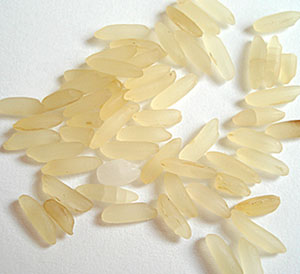 This is the long grain, parboiled rice, the kind that is most commonly used in European and American cooking. The grains don't stick together, for that separate, 'fluffy' texture that American/UK cookbooks find desirable. To me this is the most boring kind of rice with little character of its own. Nevertheless it is the least expensive kind of rice usually, and has its uses. I use this for rice dishes that have a lot of added flavor, like pilafs or fried rice. It can not be used as a substitute for japonica rice in most traditional Japanese dishes, since it is it not sticky enough.
This is the long grain, parboiled rice, the kind that is most commonly used in European and American cooking. The grains don't stick together, for that separate, 'fluffy' texture that American/UK cookbooks find desirable. To me this is the most boring kind of rice with little character of its own. Nevertheless it is the least expensive kind of rice usually, and has its uses. I use this for rice dishes that have a lot of added flavor, like pilafs or fried rice. It can not be used as a substitute for japonica rice in most traditional Japanese dishes, since it is it not sticky enough.
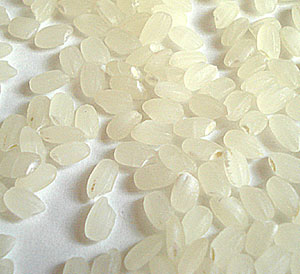 This is Japanese-style rice, or uruchi-mai - the kind of rice I talk about the most on this site. It is also sold as medium grain rice, or sushi rice. It's the rice to use for almost any kind of Japanese dish, including the all-important sushi and onigiri. The rice grains cling together without being mushy when properly cooked. This rice must be polish-washed to bring out its best flavor, as I have previously described. The best kinds of this rice have a translucent quality and have clean, rounded grains. As you can see, the grains are rounder compared to long-grain rice.
This is Japanese-style rice, or uruchi-mai - the kind of rice I talk about the most on this site. It is also sold as medium grain rice, or sushi rice. It's the rice to use for almost any kind of Japanese dish, including the all-important sushi and onigiri. The rice grains cling together without being mushy when properly cooked. This rice must be polish-washed to bring out its best flavor, as I have previously described. The best kinds of this rice have a translucent quality and have clean, rounded grains. As you can see, the grains are rounder compared to long-grain rice.
A variation of white uruchimai is haigamai (germ rice, 胚芽米). It's hulled and polished white rice with the germ left intact. This is a bit more nutritious than regular white rice. This is getting more available at Asian/Japanese groceries.See this excellent tutorial on Instructables for how to sprout brown rice.
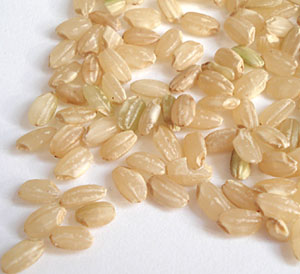 This is gen-mai, the brown version of uruchi-mai. It requires more water and a longer cooking time than the polished version. If you are in the market for a new rice cooker you may want to look for one that can cook brown rice. I've been eating more of this instead of the polished rice recently. Since the bran that is on brown rice contains oils that can turn rancid, it should be as fresh as possible. (Update: how to cook brown rice in a pot on the stovetop.)
This is gen-mai, the brown version of uruchi-mai. It requires more water and a longer cooking time than the polished version. If you are in the market for a new rice cooker you may want to look for one that can cook brown rice. I've been eating more of this instead of the polished rice recently. Since the bran that is on brown rice contains oils that can turn rancid, it should be as fresh as possible. (Update: how to cook brown rice in a pot on the stovetop.)
One way to process brown rice, which is supposed to make it much more nutritious, is to let it germinate or sprout. This turns it into hatsuga genmai (literally, "sprouted brown rice", 発芽玄米, also known as GBR in health-food/vegan circles). To sprout rice on your own, soak it in lukewarm water for 24 hours, and keep it in a warm place (I keep mine on top of the hot water tank). At the end of the 24 hours, you may see the end of the grains are splitting a bit, and evena tiny little white root peeking out - that means it's sprouted. If it hasn't sprouted yet, rinse the grains and cover again with lukewarm water. If it still hasn't sprouted by the end of another 24 hours, it probably never will, so you can just cook it before the grains start fermenting actively. Since the grains have been soaked for so long you can cook it as you would white rice (in a rice cooker for example). It is softer and supposed to be easier to digest than regular brown rice.
You can also purchase sprouted rice - look in health food stores.
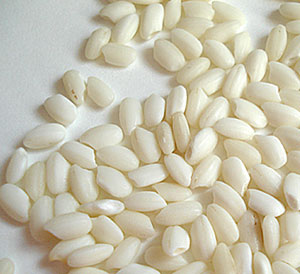 This is mochi-mai, or mochi rice, otherwise called sweet rice, short-grain rice, or sticky rice. The grains are not really that much shorter than the "medium-grain" uruchi-mai above but as you can see, the grains look quite different. The are opaque and white rather than transculent. This is beaten and kneaded to make glutinous mochi cakes, used to make osekihan (red rice with beans), or used for some sweets.
This is mochi-mai, or mochi rice, otherwise called sweet rice, short-grain rice, or sticky rice. The grains are not really that much shorter than the "medium-grain" uruchi-mai above but as you can see, the grains look quite different. The are opaque and white rather than transculent. This is beaten and kneaded to make glutinous mochi cakes, used to make osekihan (red rice with beans), or used for some sweets.
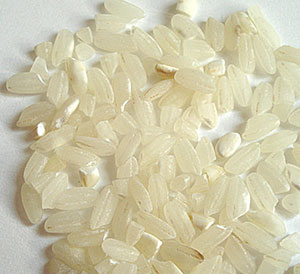 This is vialone rice from Italy. I use this or arborio rice for making risotto. It actually looks quite similar to uruchi-mai or japonica rice. These medium grain Italian rices can, a pinch, be used instead of Japanese rice. This is useful to know if you live in an area where vialone, arborio and other Italian rice varieties are cheaper than Japanese rice (which is certainly the case in Switzerland...we are a lot closer to Italy than to Japan after all). The reverse holds true too - if you have more or easier access to Japanese rice than arborio, vialone or carnaroli, you can use that, unrinsed, for risotto. When used for Italian dishes rice is not rinsed, since the powder that clings to the grains is the substance that makes risotto creamy.
This is vialone rice from Italy. I use this or arborio rice for making risotto. It actually looks quite similar to uruchi-mai or japonica rice. These medium grain Italian rices can, a pinch, be used instead of Japanese rice. This is useful to know if you live in an area where vialone, arborio and other Italian rice varieties are cheaper than Japanese rice (which is certainly the case in Switzerland...we are a lot closer to Italy than to Japan after all). The reverse holds true too - if you have more or easier access to Japanese rice than arborio, vialone or carnaroli, you can use that, unrinsed, for risotto. When used for Italian dishes rice is not rinsed, since the powder that clings to the grains is the substance that makes risotto creamy.
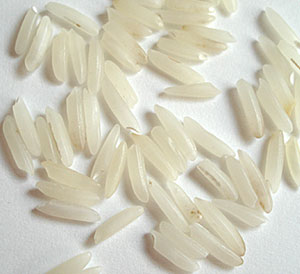 The final kind of rice that is a staple in our house is basmati rice. It has the longest grain of all, and a translucent appearance. It also has a a distinctive sort of spicy aroma, which matches spicy dishes perfectly. I keep this on hand of for Indian and Thai type dishes. I often have Thai 'perfume' or 'jasmine' rice on hand too, which is quite similar in cooking qualities. Neither basmati or jasmine rice can be used successfully in traditional Japanese dishes such as onigiri or sushi, since they are not sticky enough.
The final kind of rice that is a staple in our house is basmati rice. It has the longest grain of all, and a translucent appearance. It also has a a distinctive sort of spicy aroma, which matches spicy dishes perfectly. I keep this on hand of for Indian and Thai type dishes. I often have Thai 'perfume' or 'jasmine' rice on hand too, which is quite similar in cooking qualities. Neither basmati or jasmine rice can be used successfully in traditional Japanese dishes such as onigiri or sushi, since they are not sticky enough.
See also
Filed under: japanese ingredients riceJapanese basics: Essential Japanese cooking equipment
Since I posted my article about essential and not-so essential Japanese ingredients, a number of people have asked about the equipment I use for preparing Japanese food. It's taken me a while to get to it, but here it is finally. (You can consider this as a kind of gift guide for anyone who's into Japanese cooking too..'tis the season and all that after all!)
The list of special equipment that I do have besides the things you might find in any European-style or American-style kitchen is not that long, but there are some items that I find are well worth having. Keep in mind that, as usual, I'm speaking from the perspective of someone who doesn't live in Japan. If I lived in Japan chances are I'd have a lot more Japanese cooking-only items, such as a square pan for making atsuyaki tamago (the thick, square slightly sweet omelette often served in sushi restaurants). I also use some substitutes for things that I can use for Japanese cooking methods as well as other cuisines, as you'll see.
My must-have items
 A good rice cooker. If you make rice, any kind of rice, more than once a week, you will never regret getting a rice cooker. [Update: a detailed look at rice cookers.
A good rice cooker. If you make rice, any kind of rice, more than once a week, you will never regret getting a rice cooker. [Update: a detailed look at rice cookers. A wooden rice container, or hangiri. It's tempting to use the "keep warm" feature of your rice cooker, but if you want the best tasting rice don't! Once rice is cooked, you need to fluff it up with a rice paddle, then ideally transfer it to a container that breathes - like a wooden hangiri or ohitsu. Mine is narrower and taller than the one pictured, which is meant for sushi rice, but it serves the same purpose. (Also I haven't been able to find an online source for the tall narrow kind of ohitsu so far...if you know of one please let me know.) If you are making sushi rice you must take the rice out and put it in a hangiri (see my Japanese rice primer).
A wooden rice container, or hangiri. It's tempting to use the "keep warm" feature of your rice cooker, but if you want the best tasting rice don't! Once rice is cooked, you need to fluff it up with a rice paddle, then ideally transfer it to a container that breathes - like a wooden hangiri or ohitsu. Mine is narrower and taller than the one pictured, which is meant for sushi rice, but it serves the same purpose. (Also I haven't been able to find an online source for the tall narrow kind of ohitsu so far...if you know of one please let me know.) If you are making sushi rice you must take the rice out and put it in a hangiri (see my Japanese rice primer). - For mixing and scooping rice, you'll need a good rice paddle. Chances are you will get a free one with your rice cooker, otherwise a slightly curved one is handy. (The curved one is really handy for scooping up non-sticky grains, such as basmati rice).
 A carbon-steel wok. I know that a wok is Chinese in origin, but every Japanese household uses a wok extensively - for stir-frying tasks and for deep-frying too. There are oil-draining racks designed to fit around the perimeter of a wok. If you have an electric or induction range like I do, you must get a wok with a heavy, flat bottom - that stays flat.
A carbon-steel wok. I know that a wok is Chinese in origin, but every Japanese household uses a wok extensively - for stir-frying tasks and for deep-frying too. There are oil-draining racks designed to fit around the perimeter of a wok. If you have an electric or induction range like I do, you must get a wok with a heavy, flat bottom - that stays flat. - Several flat bamboo or water-resistant wicker baskets/sieves, or zaru. I haven't seen these offered online (so far) but you can often find them at Asian gift and food stores, and even in some department stores. Woven bamboo ones are the best since they are water-resistant and clean easily. These are used for serving things like cold noodles (soba, or buckwheat, cold udon, thin so-men, and so on). I also have some small ones which I use sometimes to make round-shaped tofu. There is a big difference between serving noodles in a plain old colander vs. on a nice bamboo zaru.
- A bamboo sushi rolling mat. If you make sushi rolls this is an essential tool. You can also use it for making other rolls (like flavored spinach wrapped in nori).
- Saibashi - long, uncoated wooden chopsticks, connected together with a piece of string. I have several pairs of these which I find essential for picking things up and turning them, stirring things around, and so on, If you're not used to handling chopsticks you may find a pair of tongs to be easier to manipulate.
Great substitutes
The following items are ones that are not Japanese, and which might not be used much in Japan, but I've found to be very good for Japanese cooking.
 A cast-iron stovetop grill pan. In Japan I might use an yakiami for grilling fish and shiitake mushrooms, but here I find a cast iron grill pan to do the job just as well. It also works great on an electric range (for an yakiami you need a gas flame).
A cast-iron stovetop grill pan. In Japan I might use an yakiami for grilling fish and shiitake mushrooms, but here I find a cast iron grill pan to do the job just as well. It also works great on an electric range (for an yakiami you need a gas flame).
 Enamelled cast-iron pans. There are a lot of Japanese dishes that involve gentle stewing, such as nikujaga (stewed meat and potatoes). There are also nabemono which are big pots of meat or fish and vegetables all cooked together. For these kinds of dishes, in Japan I might use an earthenware pot called a donabe, but here I find the heavy, enamelled cast-iron pots made by Le Creuset to be very useful, since they cook things very evenly. Since they are so pretty to look at I can use them for serving in-pot too. Finally, if you don't want to invest in a rice cooker, a cast-iron pot is the ideal container for cooking rice on the stove top.
Enamelled cast-iron pans. There are a lot of Japanese dishes that involve gentle stewing, such as nikujaga (stewed meat and potatoes). There are also nabemono which are big pots of meat or fish and vegetables all cooked together. For these kinds of dishes, in Japan I might use an earthenware pot called a donabe, but here I find the heavy, enamelled cast-iron pots made by Le Creuset to be very useful, since they cook things very evenly. Since they are so pretty to look at I can use them for serving in-pot too. Finally, if you don't want to invest in a rice cooker, a cast-iron pot is the ideal container for cooking rice on the stove top. - A sturdy metal strainer is useful for straining the bonito flakes out of your dashi stock and other tasks (the Japanese housewife might do this by adeptly picking it out with her saibashi, see above).
- A good, heavy frying pan or two. I use three frying pans: a stainless steel one and two non-stick ones.
As you can see the list is not that long. The only other things you need are a couple of good knives. Knives are a whole topic unto themselves, so I'll leave that for another day.
Serving Japanese food
Besides the cooking equipment I have a variety of Japanese bowls and serving dishes I've accumulated over the years. If you're starting out on this road you can get a lot of very nice things from eBay these days. Jlist also carries many traditional and fun authentically-Japanese serving items. If you want to present a minimalist kind of plating though, just serve your Japanese food on plain white plates, and use plain white bowls for rice and soup. Don't forget to use chopsticks though!
Filed under: basics equipment japanese
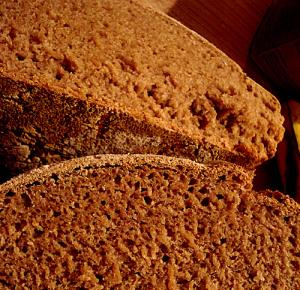
 The theme of the fourth round of
The theme of the fourth round of 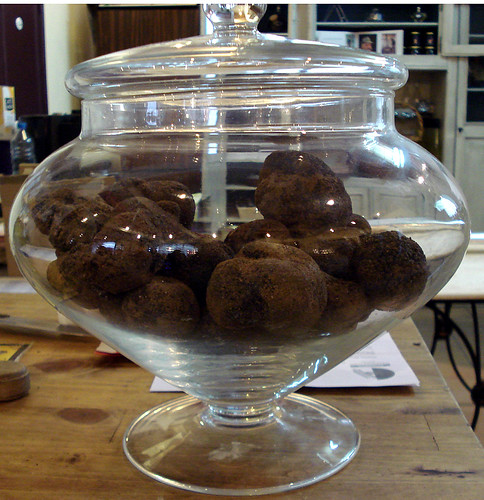
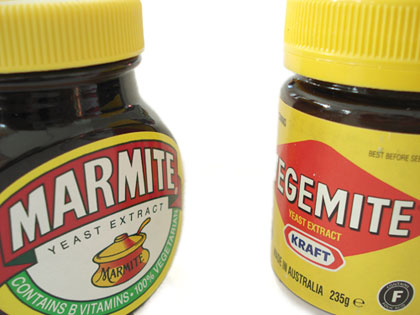
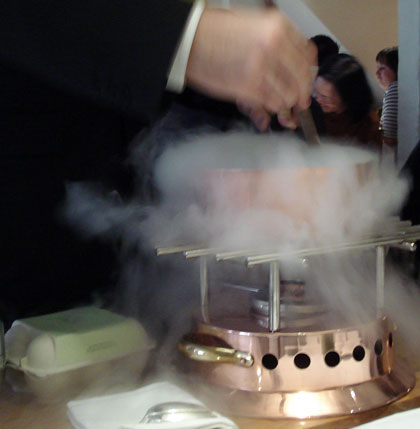
 Welcome to Just Hungry, where we serve authentic Japanese recipes and more! I'm
Welcome to Just Hungry, where we serve authentic Japanese recipes and more! I'm 











